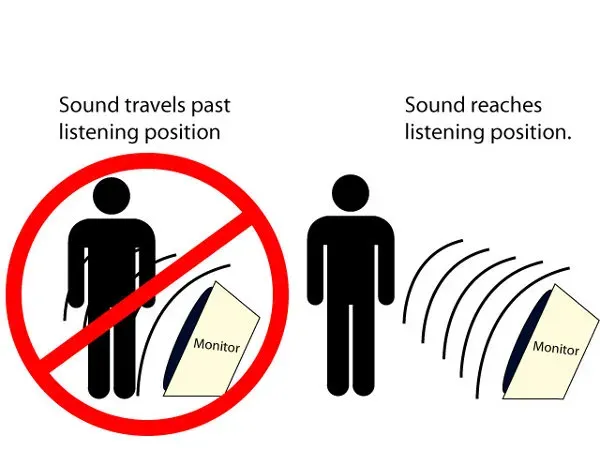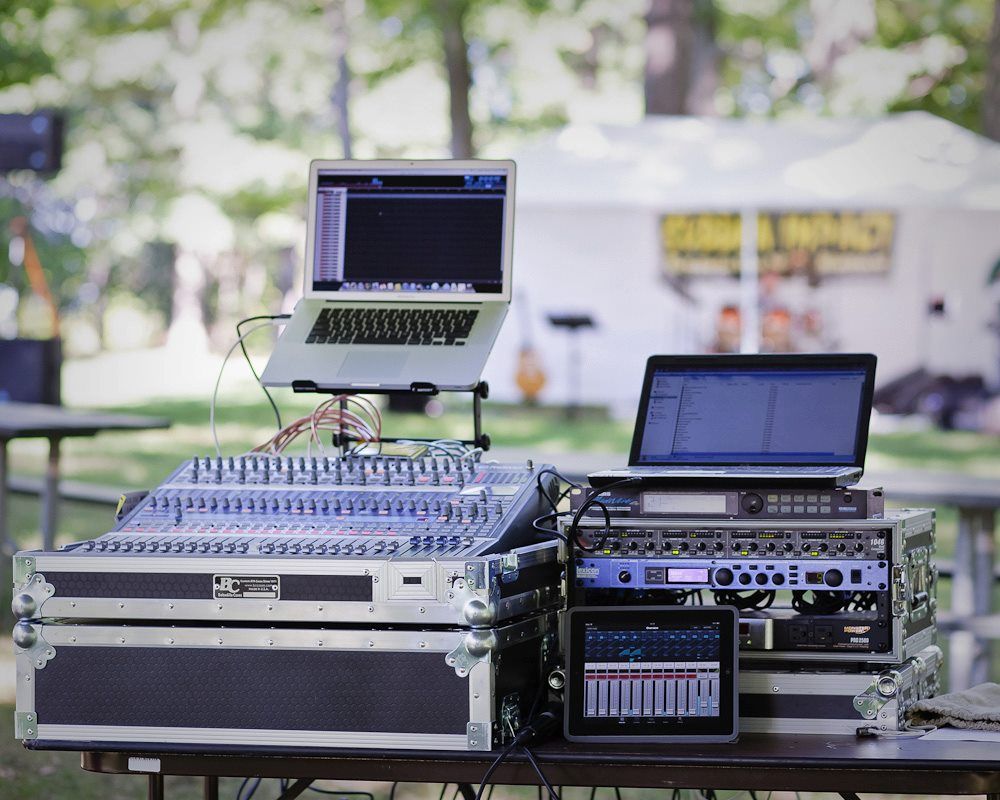It requires more than just great FOH speakers to make great sound...
...But it doesn't have ears...

We can't begin to count the number of times that the artist inquires about the quality of the sound 'out front'. We have a saying: As much as we can MAKE it suck, we can't FIX suck. Audio production is as much experience as it is SCIENCE. Stage monitor placement is just as important as FOH placement, if not more. Stage volume (sound coming acoustically off the stage) can destroy the mix at FOH quicker than the drunk drummer trying to keep meter. Placement of amplification (which we will chat about later) and monitor speaker placement can make or break this.
Standing ‘on top’ of your monitor is the first wrong step. Multiple times when I have set up for incoming performers/groups, I have set the wedge where it is acoustically (scientifically) correct, only to have the musician pull it “to their toes”. Is this an exaggeration? Only slightly. If you’re one of these folks, here’s why it’s not a good thing.
If you’ll excuse the crudity of the following saying, I believe you’ll get the point: “Yes, you have a head down there but no, it DOESN’T HAVE EARS.” Yes, I know not all performers are of the XY persuasion. That being said, the spirit of the quote still applies. Standing on top of a stage monitor will require 2.5 to 3-times the volume for you to hear it. Why, you ask? You’re not on axis to the physics of the cabinet. If you can’t just simply move your eyes down/left/right to see the cone of the speaker, you’re not in the wave of sound. Most, not all, vocal microphones are designed to have dead areas or “drop-outs” in their polar map. Most of these are at the back (cord) end of the mic (we’ll call that point zero degrees) to about 45-degress both left and right. Best monitor placement is AT that 45-degree point (left or right) and far enough out that you can see the cone. Distance from you will be greater if you’re 6’1”, less if you’re more diminutive in stature. In this configuration, not only can you hear more (at lower volume) but the microphone is off-axis of the speaker, and you’re not killing the drummer with your mix to the point he can’t hear theirs.
In these days of "big PA", i.e. micing all instrumentation, stage volume kills the mix at FOH. The biggest advantage is this: You don't go home with such a severe case of tinnitus.😉


